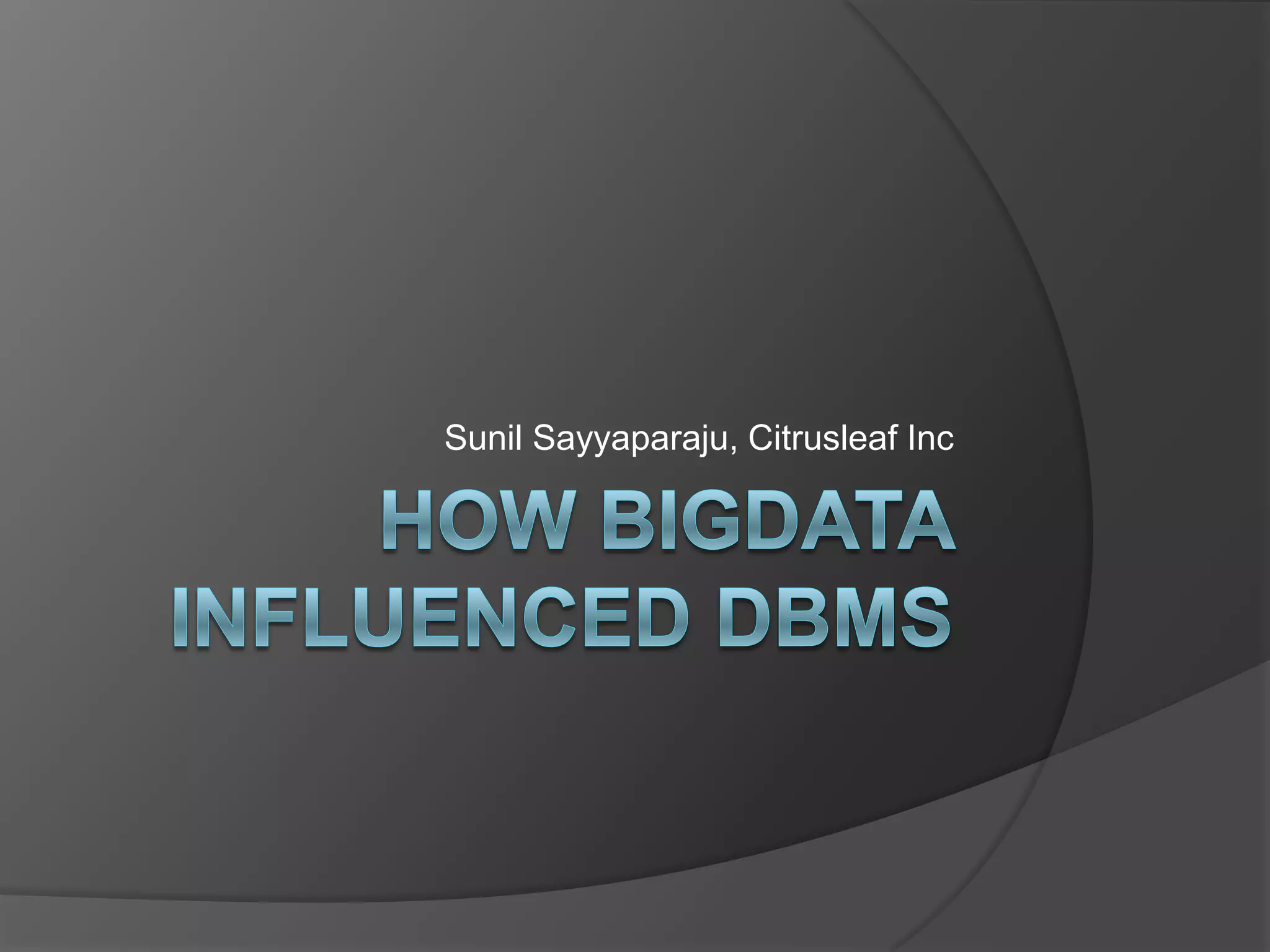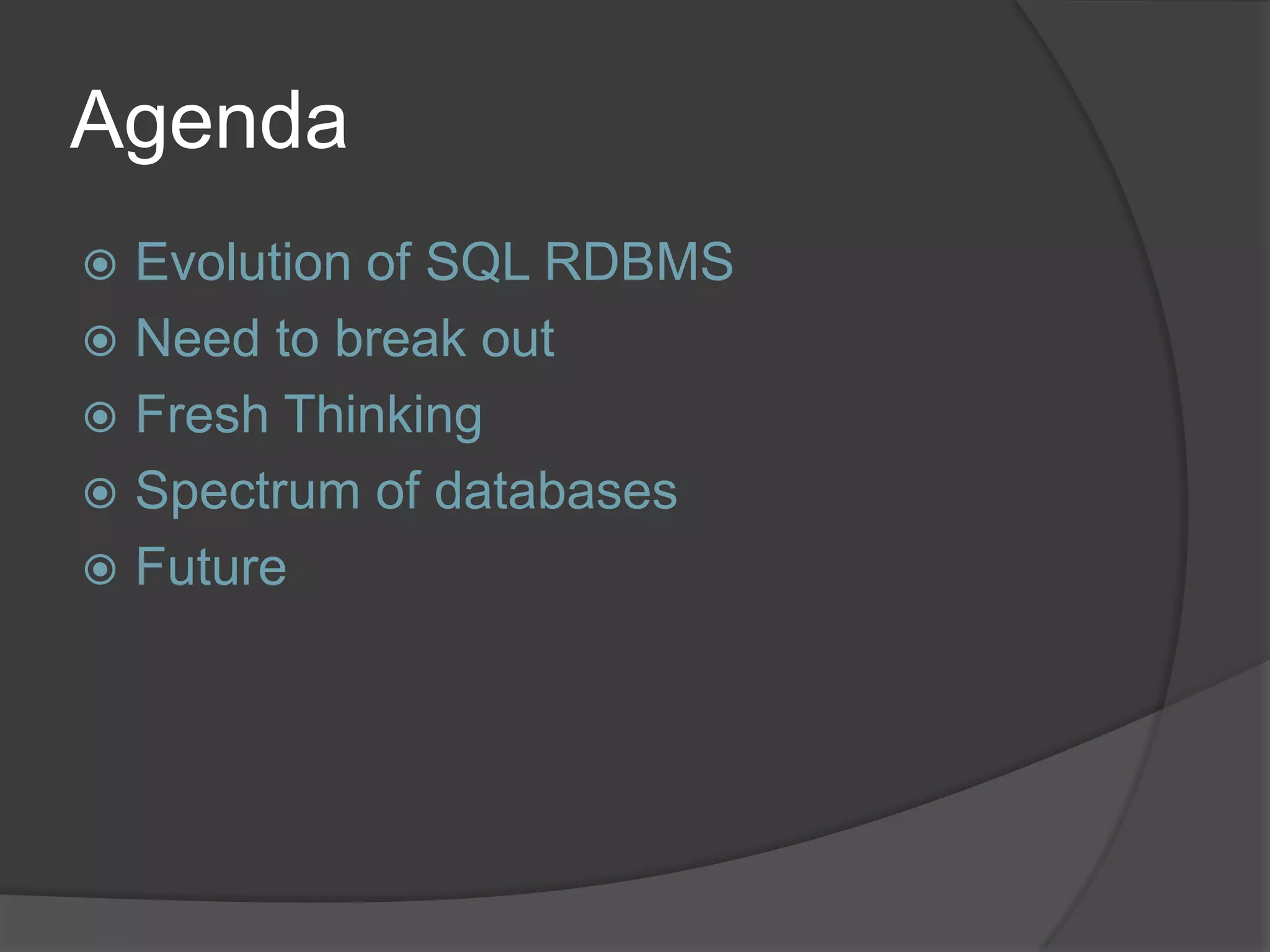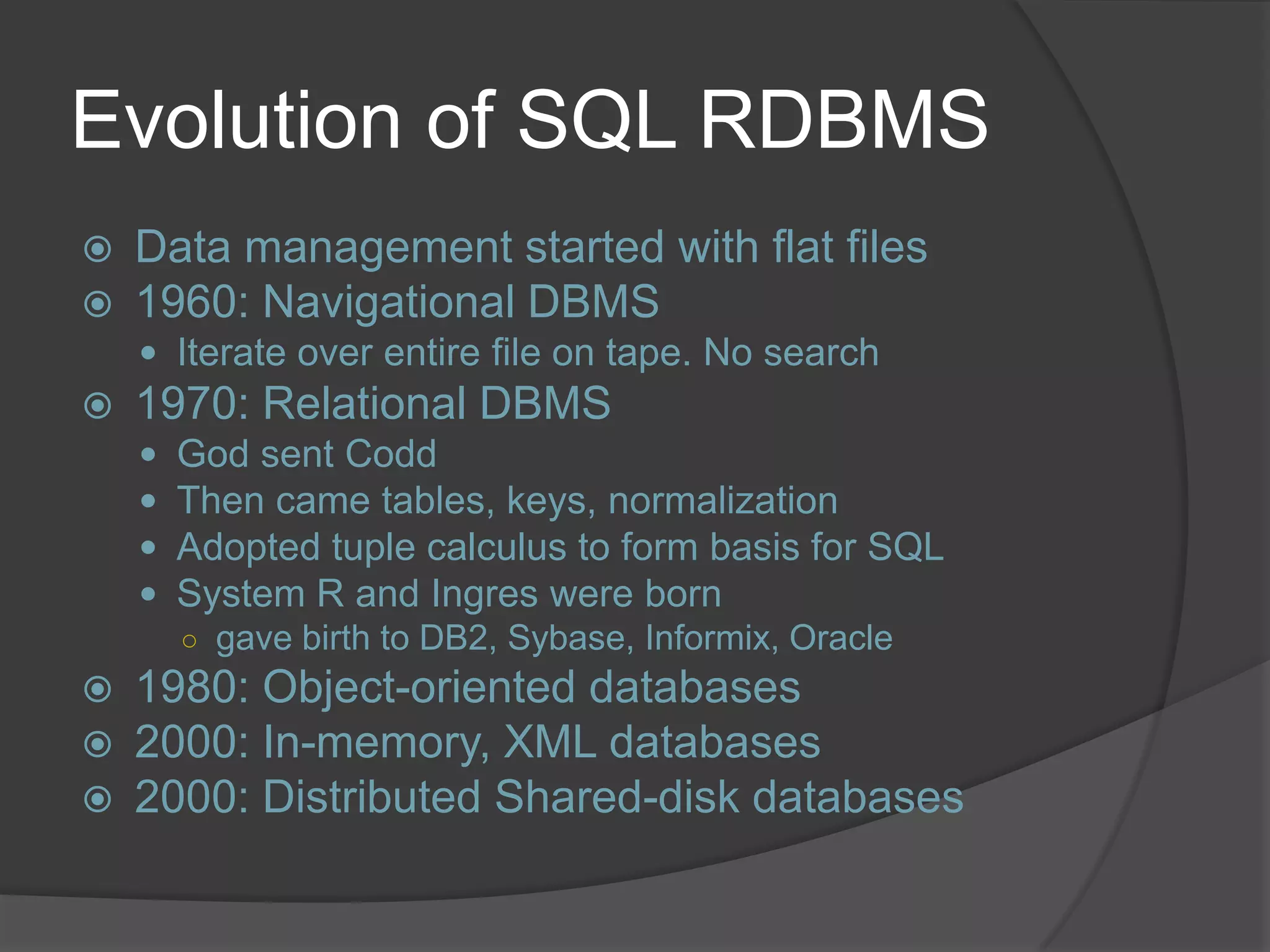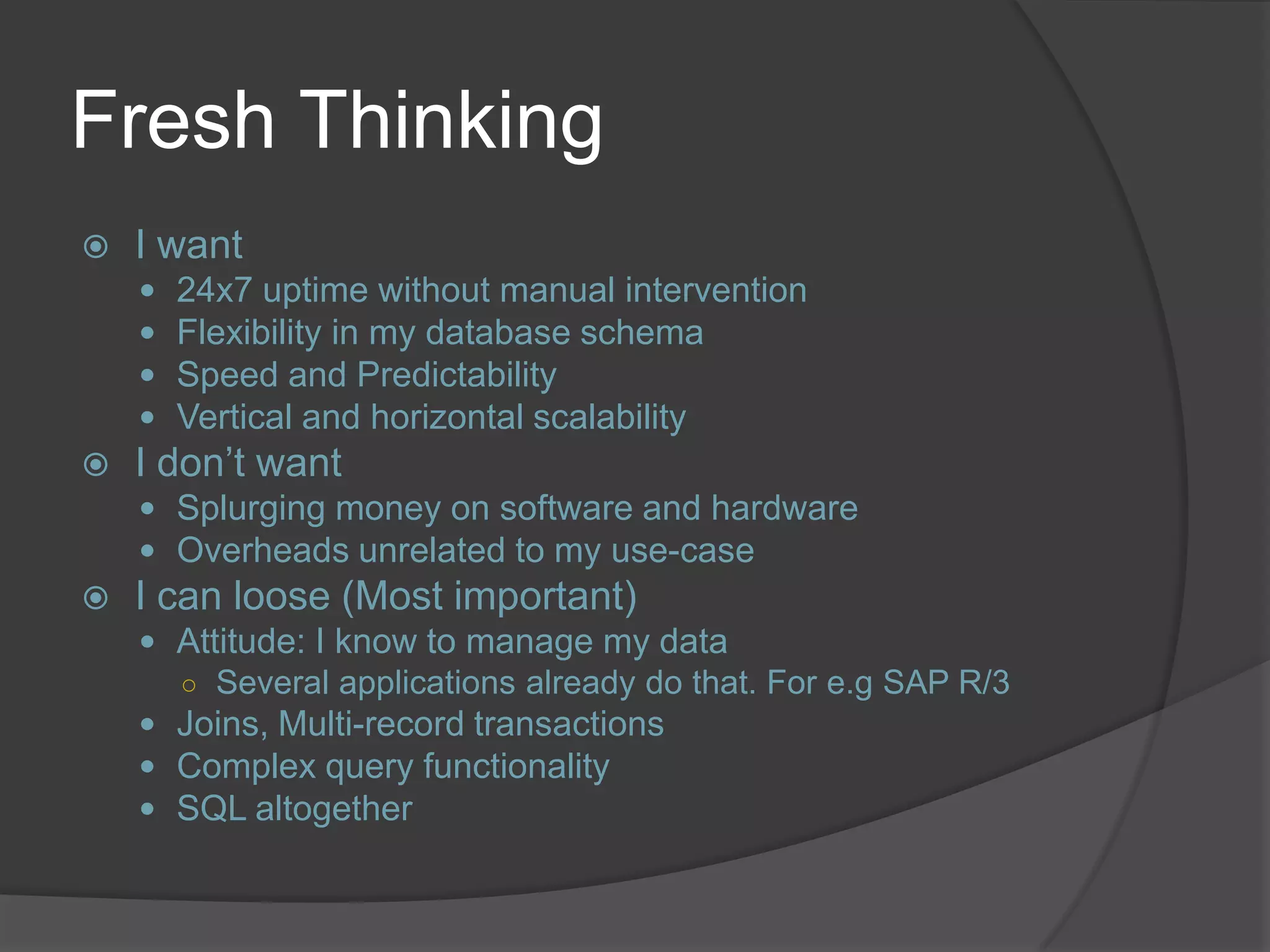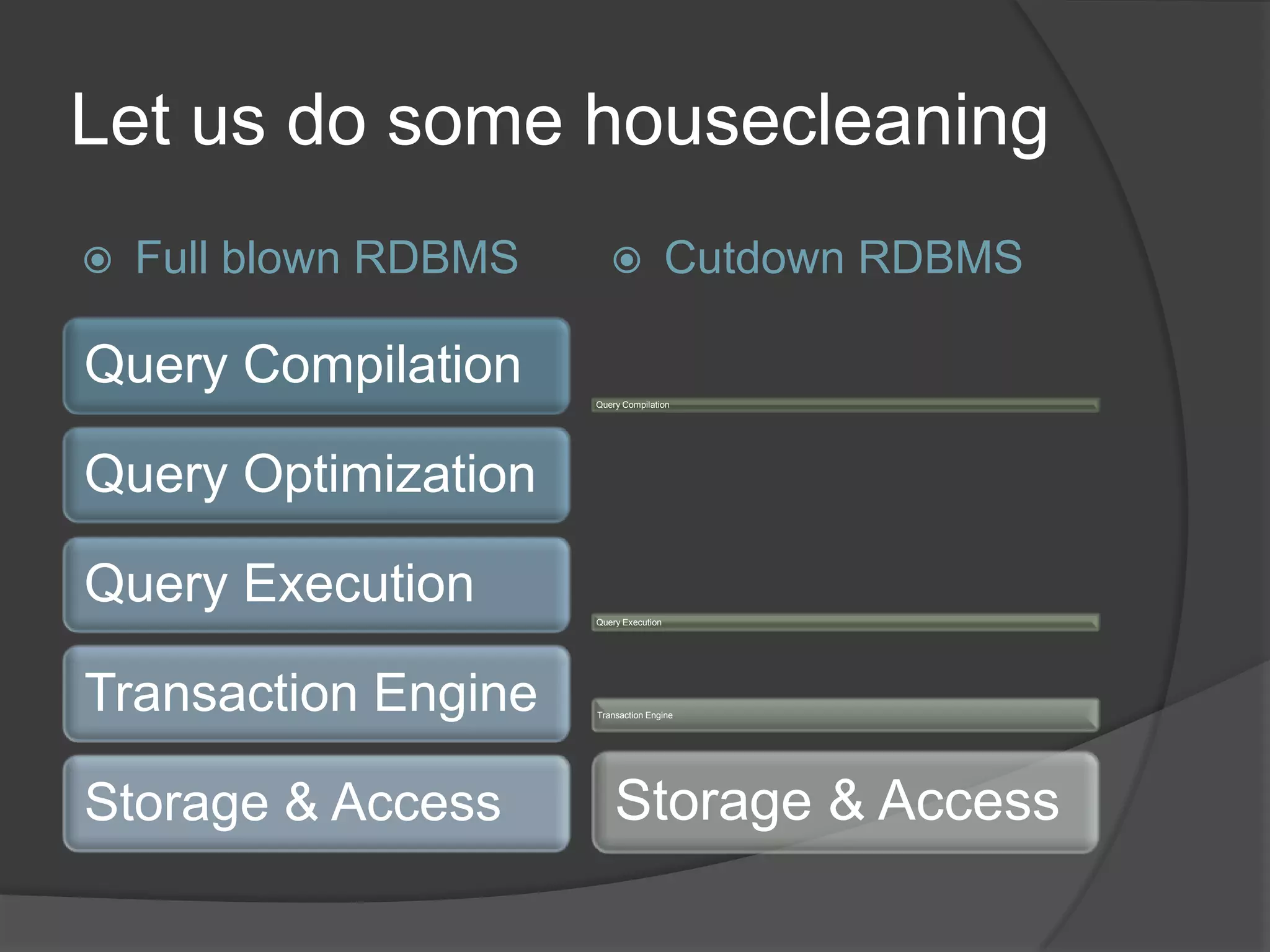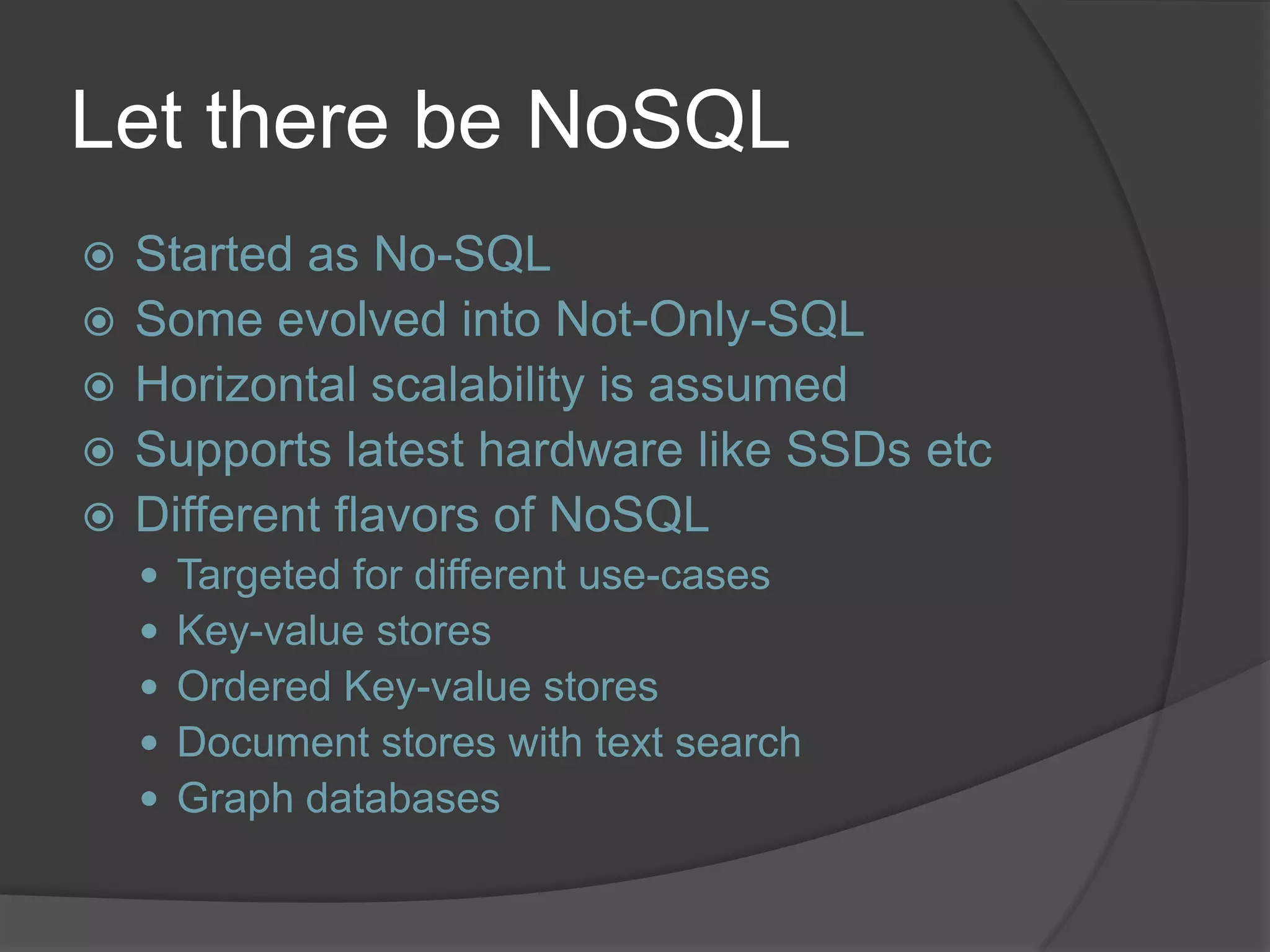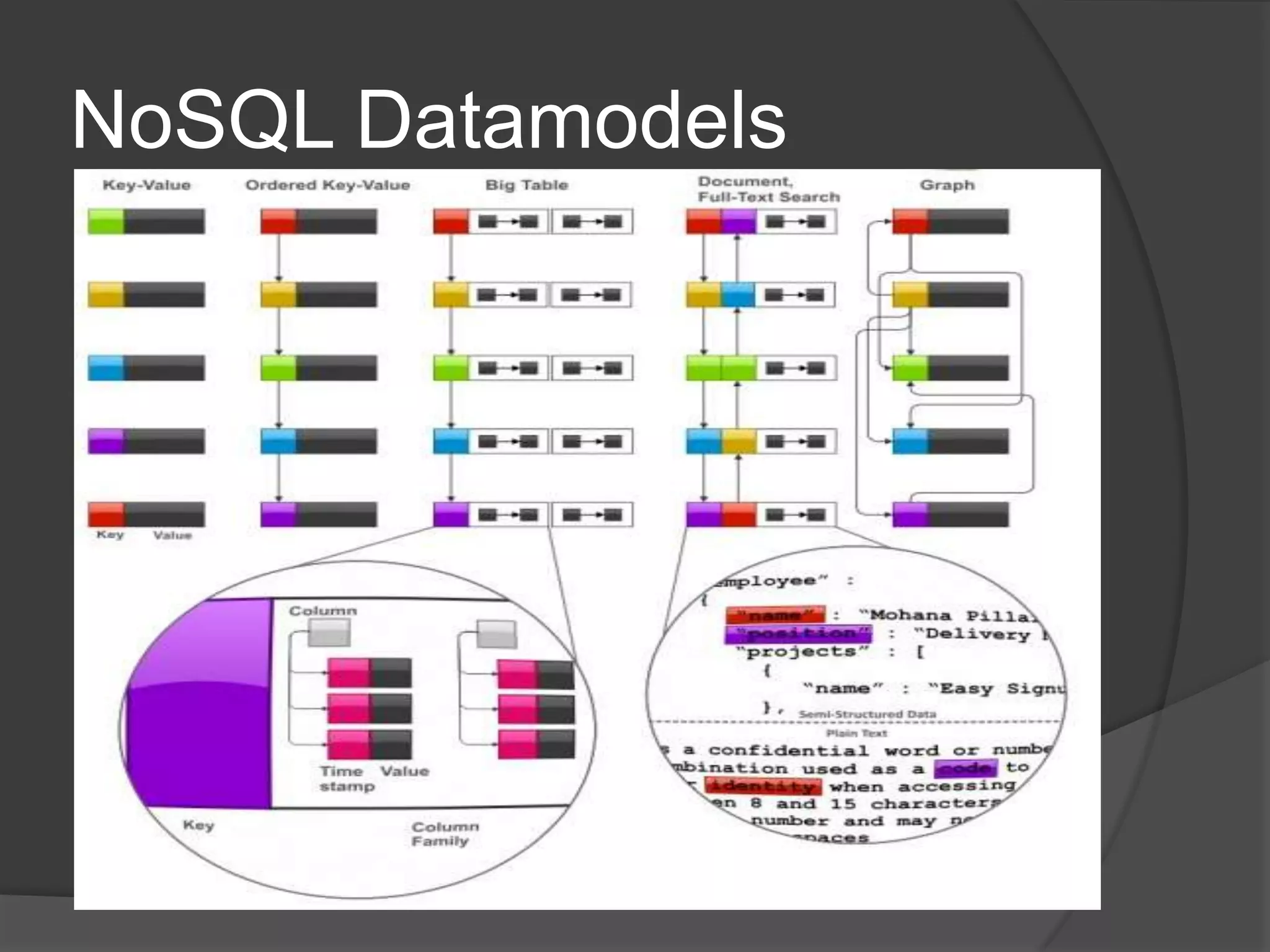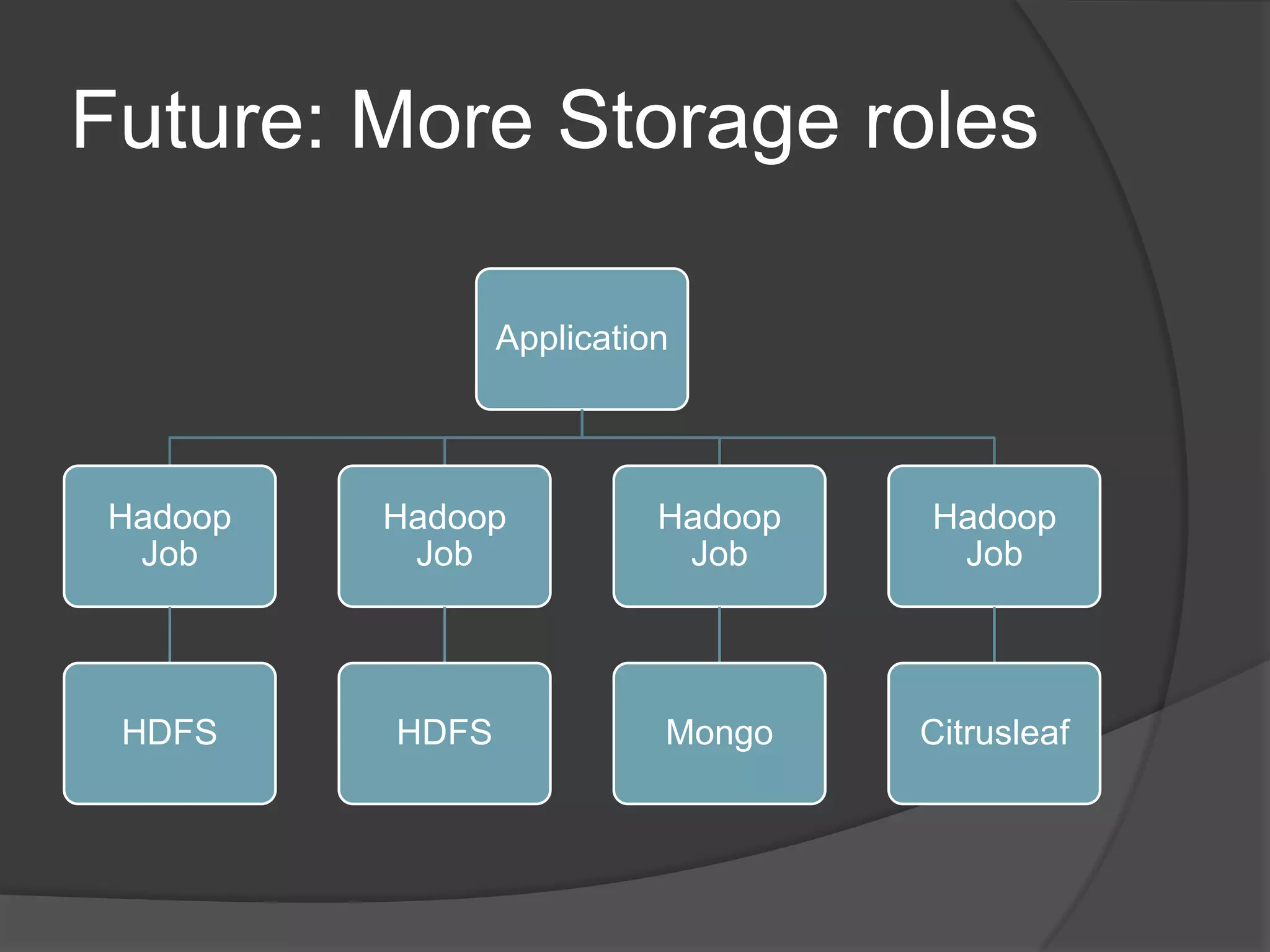The document discusses the evolution of SQL and NoSQL databases, highlighting their respective strengths and challenges. It emphasizes the need for flexibility, scalability, and 24x7 uptime in database management systems. The conclusion suggests that while NoSQL addresses specific problems effectively, it cannot fully replace SQL without losing some features.
